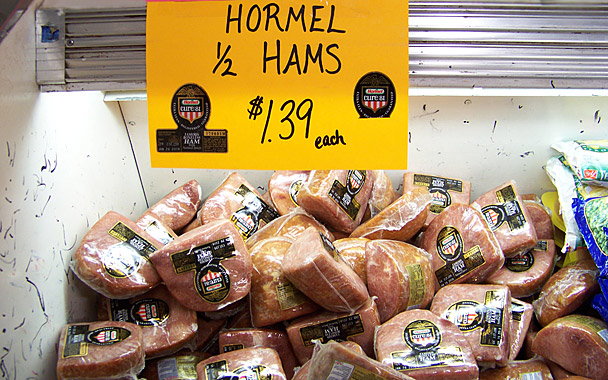I once took great enjoyment from poring over cookbooks and shopping for a wide array of spices, meats, and necessary delectables. Some days it provided me with a purpose. Other days, it teased my palate just enough to squash career-induced anxieties (What’s my Amazon rating now? Is the Times really going to run that rev ... oh, look at all those fresh artichokes). Always, it breathed life into the nightly, desultory job of serving dinner to a mostly appreciative family. If I had to be the cook, then at least I was going to have a James Beard time of doing it. So what if it meant driving all over town to three or four purveyors and sometimes paying exorbitant prices?
I shopped and shopped, and the multiplying interest on our loans grew and grew. Pricey food was not the only place I wasted money, but when people ask what is the biggest or most important change we’ve made, I always answer, “food.” It was the one category in which I allowed myself and my family to consume with abandon, and the one thing I believed you would have to pry out of my cold, dead fingers before I gave it up. We spent a hell of a lot of money on eating, either at home or out on the town. A head-shaking, what-was-I-thinking amount of money.
Now the six of us are down to about $350 to $400 a month, and we’re expecting that to go well below $200 come late summer and the bounty of our garden. Obviously, as I’ve said before, we don’t eat out. Two or three dinners at a decent restaurant would blow right through that monthly tab. Most importantly, though, I almost never shop for ingredients for a specific recipe. In fact, I often have no idea what I’m going to buy when I step through those comforting pneumatic doors. What do I do, you ask? I buy what’s on sale or else I just don’t buy. It’s that simple. The idea of shopping without a list flies in the face of the normal way of doing things, and considering the mess many of us are currently in, that alone ought to tell you I’m on to something good.
This is how it works: Today, asparagus, which often goes for $3 or $4 a pound, was on sale for $1.50. In the past, if I’d been planning on making slippery chicken with garlic green beans, I would have zipped right by the asparagus, bought two pounds of the full-price beans at $3.95 a pound, and been out $5. Replay that same experience while shopping for 10 to 15 more items, and we’re talking a significant amount of money. Hundreds of dollars a month, thousands of dollars a year.
Equally important, this new way of shopping is the poor man’s answer to the chef only buying the produce or meat of the day at his local farmers market: Shop with the slash mark and cook with your heart. Take that asparagus, for instance. I also got cheap scallions (half off) and even more of the Maine shrimp I bought in a few weeks ago (they’re down to 75 cents a pound). There was some kind of fire sale on cream last week so we already have practically a gallon of heavy cream. So, while I had been thinking about making pasta with meat sauce, now it looks like we’re going to have creamy asparagus and shrimp spiced up with red peppers from the sale rack and topped off with quick-fried scallions served over a mound of jasmine rice from a 20-pound bag I bought for $9.
What would you have made?
Typical price of green cabbage: 79 cents per lb
Cabbage on sale: 25 cents
Typical cost of Roma tomatoes: $1.99
Roma tomatoes on sale: 99 cents
Average number of eggs produced daily by the Carters’ 19 five-month-old hens: 4
Estimated total cost of the 49 eggs laid so far: $277
Price paid for store-bought eggs on sale on 3/18/09: $1.45 a dozen




 Pinterest
Pinterest


